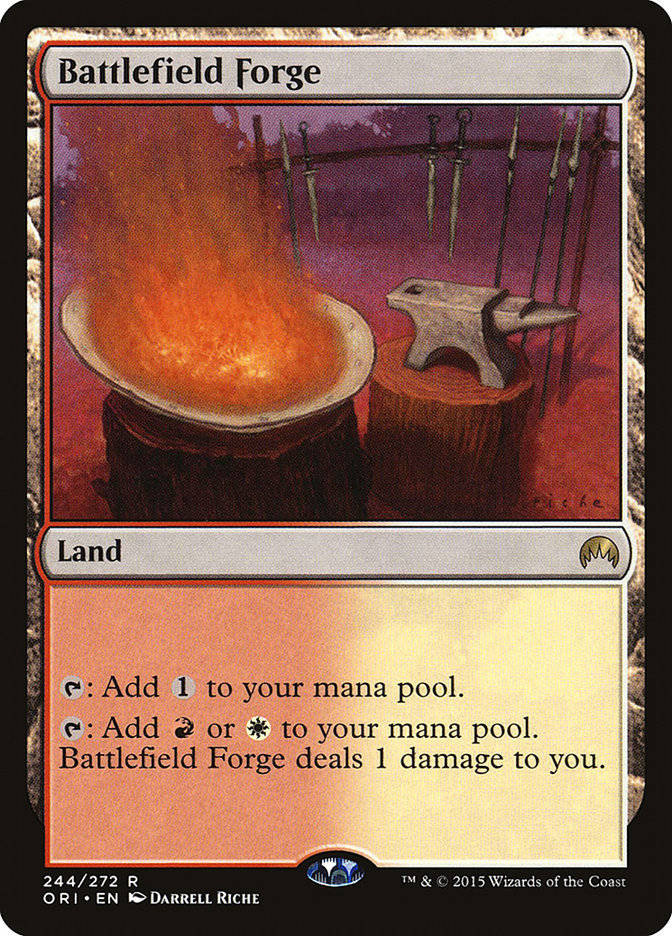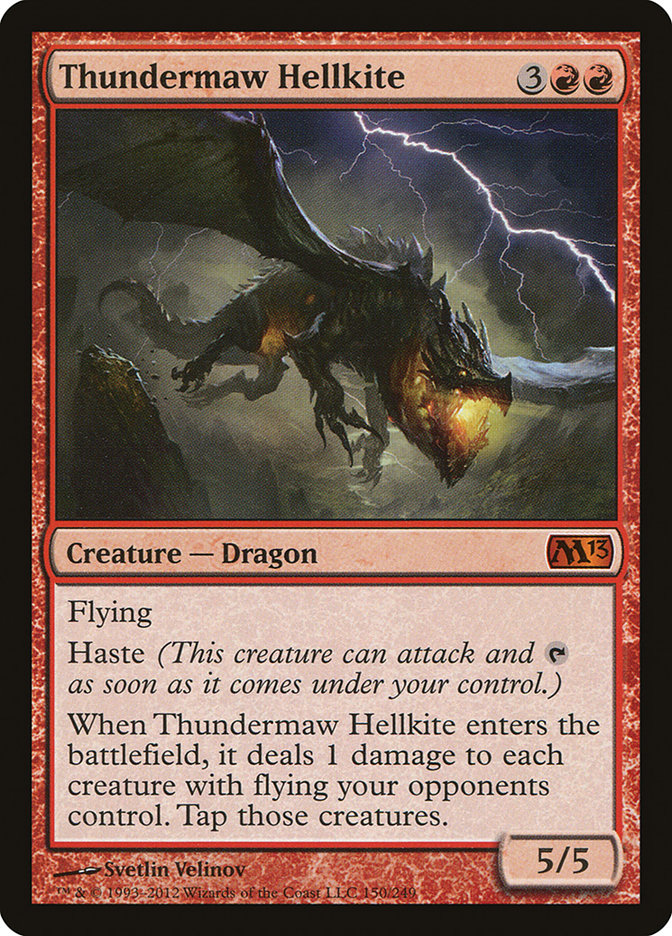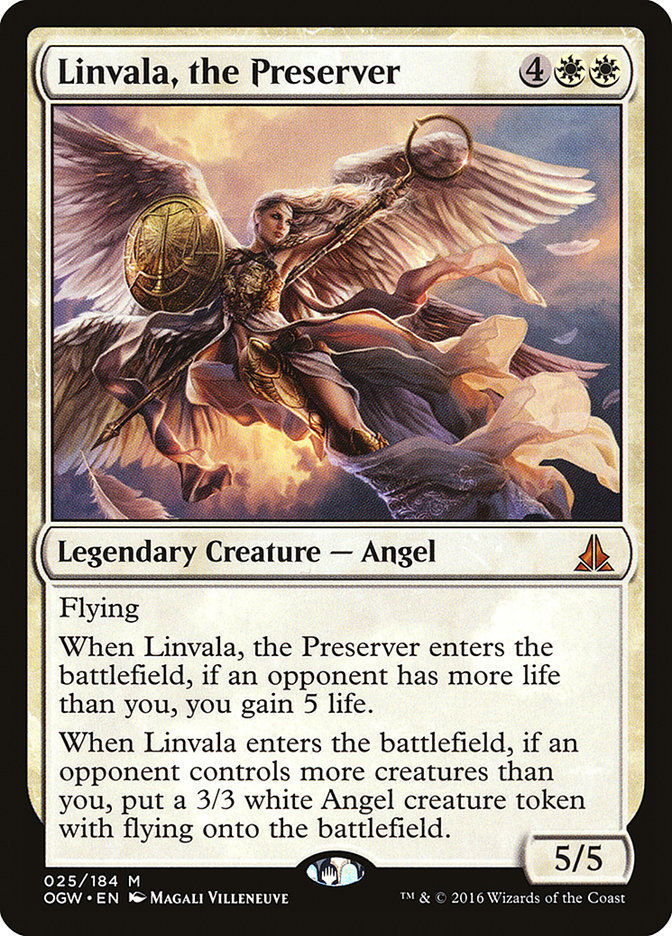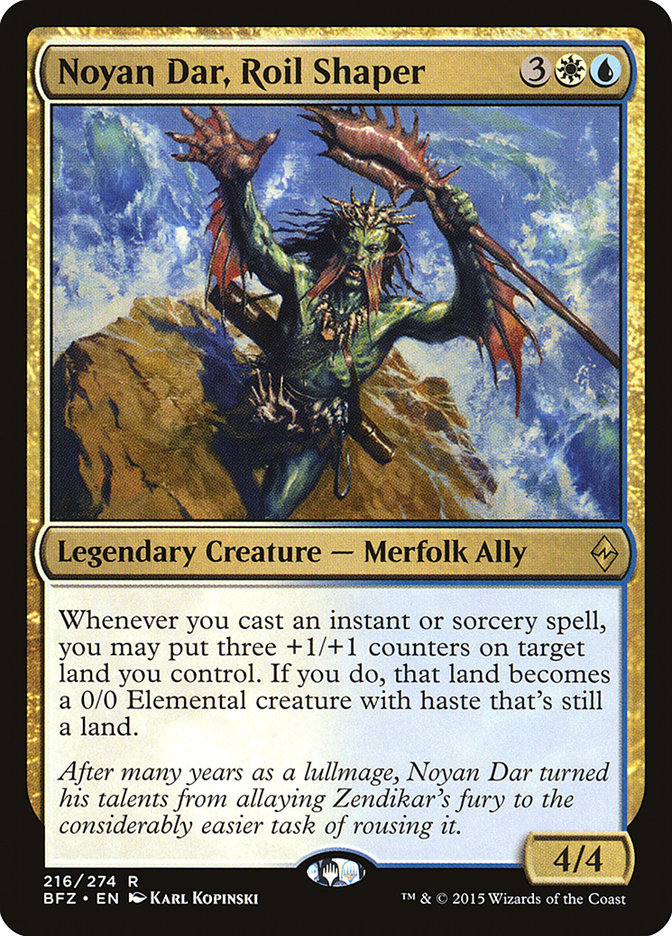There are a lot of wild things that can happen over the course of a Magic season. Sometimes a deck will emerge that really spices things up and makes the world shake with its presence. At other times, the old standby keeps the world largely in check.
These are often the edges of the Magic metagame universe, “the new” as the wrecking ball, or “the old” as the tyrant. A lot of times, however, “the new” isn’t a wrecking ball; instead it is more of a new ingredient to a familiar recipe (“Oh, something different! Is it… basil?”). Similarly, “the old” can sometimes not be a tyrant, but rather be a kindly older sibling, more established but not necessarily oppressively dominating.
For those of us interested in tournament Magic, we are constantly in the swing of these two worlds. We have to look to a simple question when we make our tournament decisions: do we continue to play the classic, most powerful established deck, or do we try out the new, because it can be surprise or simply because people don’t necessarily even know how to approach the new deck?
At the top of our game, we have the Platinum Pros. One of the names that often pops up as “the current best player in the game” is Owen Turtenwald from the United States. A less well-known name is Jason Chung from New Zealand. Both of these players recently finished highly in World Magic Cup Qualifiers (WMCQs) in their respective countries, and they each approached this from the opposite ends of the spectrum.
Let’s start with Owen.
The Kindly Older Sibling
I’ve known Owen for a very, very long time. I remember rushing through the airport in Valencia with him at his first Pro Tour, back in 2007 in Valencia. I remember many years of playing with and against Owen in numerous events in Wisconsin, back when he used to live here near me. I can’t recall the first time I played against Owen Turtenwald, but if I’m recalling it correctly, he was pretty young.
These days Owen is not a kid anymore.
When people talk about him as one of the best players in the world, the reason is simply the absurd catalog of results he’s accumulated. There was a reason I started with him at the PlanesTalkers panel back in Chicago in 2014.
He hasn’t stopped excelling since then, but rather has added many Grand Prix Top 8, including a win; a PT Top 8; and a finals appearance at Worlds.
For his shot at Team USA, he took W/B Control, the same deck that reigning World Champion Seth Manfield took to GP victory and a regular mainstay in events. Owen himself hit Top 8 at GP Minneapolis, the last Standard US Grand Prix, with the same archetype, in a Top 8 filled with Humans and G/W Tokens.
Here is the list he took to a WMCQ win:
Planeswalkers (8)
Lands (26)
Spells (26)

So, first of all, one has to ask a simple question: what did he change since the Grand Prix?
Well, the fast answer is nothing.
The slightly more nuanced answer is looking at the changes in the sideboard.
He took out the following cards from his sideboard:
He replaced those cards with:
After all of these changes, he marched into a Top 8 that was otherwise populated entirely by Bant Humans and G/W Tokens and took it down.
His plan for his build of W/B Control was already clearly set a long while back, with the inclusion of a pair of copies of a single card:
With this choice, he was making a declaration: this was a deck that would use colorless. Three additional Eldrazi were added to the sideboard, and yet no more colorless cards were added to help this plan out. Instead, he would rely on the nine sources he had in the deck to support two more colorless spells and one more card with an activation. My guess is this is probably sufficient.
Rather than try to run disruption, the shift was toward more threats. My expectations are that he found that what he was really looking for more of an attempt to handle things actively. Reality Smasher is, simply put, an amazing card and particularly great against anything grinding. In addition, Reality Smasher also can work very well just against someone who happens to stumble. My friend Ronny Serio likens Reality Smasher to another absurd card from Magic’s past:
The creature package isn’t just for control, though. I expect that Flaying Tendrils likely joins several of the sideboard creatures in fighting against the creature decks. Eldrazi Displacer is a great body for cheap, and its activated ability is relevant for stabilizing the game. Linvala, the Preserver is basically absurd against aggressive decks of all stripes. Should you happen to get both Linvala, the Preserver and Eldrazi Displacer, you can generally count that as the “lights-out” moment for an aggressive deck.
I speak from experience in saying that Linvala, the Preserver is an incredible card against anything hoping to kill you. The card is so good at its job that it can entirely change the tenor of the game versus attack-phase decks.
Meanwhile, the old plan for this deck remains the same: play quality cards and negate the opponent’s gameplan with a mix of mass removal and card-for-card answers, all while drawing cards to get ahead. If you think of yourself as likely a better player than your opponent, this is a great deck choice, as it has answers for nearly anything; can steal a game away simply by having a Gideon, Ally of Zendikar hit the table unanswered; and is flexible in its gameplan. This is classic midrange-control play that basically puts it in the same realm as more controlling builds of The Rock from Magic’s early years, or decks much like Bant from the Thragtusk era.
Then, of course, there is the wild approach.
The New Ingredient
I’ve only known Jason Chung for a little more than a year. After Brussels for Pro Tour Dragons of Tarkir, we’d end up talking at various events, and having fun playing games like One Night Ultimate Werewolf (he’s a master at this, by the way); he was just consistently smart and great company, and I’m glad to have built up a friendship with him.
He is not a typically wild-and-crazy player when it comes to deck selection. At Pro Tour Dragons of Tarkir, he played R/G Dragons. In Modern, he’s often favored Burn, with Blue Moon being his deck of choice for Pro Tour Oath of the Gatewatch. With that in mind, it was with great surprise that I saw Jason had Tweeted having a top finish with the deck people are calling “Mono-Blue Prison” (I say that “people are calling” the deck Prison, because it is not a true Prison deck; the deck functions much more like a “Turbo”-style deck, where it sets up an engine and hopes to ride out the game to a conclusion; and, yes, many “Turbo” decks are also Prison decks).
Here is the deck Jason Chung took to a Top 8 of a WMCQ in New Zealand before conceding to his friend who would win the whole thing:
So, first of all, what is it that Jason is doing that Martin Muller was not doing in his list?
As before, the fast answer is nothing.
Also, as before, the slightly more nuanced answer is looking at the changes in the sideboard.
Jason removed these cards from Muller’s sideboard:
He replaced them with these cards:
I think much of what is going on in Jason’s build of the deck is the exact same move being made by Owen in his very different deck: a decision to answer controlling decks with something more actively threatening. Narset Transcendent goes a long way toward enacting that plan.
When you think about what Narset Transcendent is threatening versus many controlling decks, it is threatening, in essence, an ultimate planeswalker ability which basically says “You get an emblem with ‘Your control opponent can’t win the game'”. It isn’t strictly true, but it is mostly true. Even more frightening, Narset Transcendent, in this Standard, forces a controlling opponent to try to fight the card mostly in the realm of damage, a place where this deck is well-prepared to fight. Go ahead and attack Narset – you’ll largely be setting yourself into the gameplan the deck wants you to. Or, don’t go ahead and do this – you’ll have to use an otherwise weak card like Ruinous Path or an otherwise precious card like Anguished Unmaking. In the meantime, Narset may have pulled out some extra card value.
Noyan Dar, Roil Shaper is similarly shocking in its power as a threat. I’ve only ever faced down Noyan Dar, Roil Shaper in Limited, where it is an incredibly scary card. But in a deck like this, practically every card is going to help Noyan do some shaping of roils. One nice thing, too, is that lands are often hard to kill, and you can spread around Noyan Dar, Roil Shaper’s awakening of land or pile it on large on a single land or two, depending on whatever makes the most sense. Especially in a deck that might also be taking extra turns, this is some scary stuff indeed.
Where Jace, Vryn’s Prodigy feels like it was lackluster, perhaps allowing you to have a flipped Jace as an alternative way to win the game, these two U/W cards feel like they are actively taking charge of the tenor of the game. Meanwhile, the other portion of the deck, the “Turbo-Engulf” plan, is still in action, with Thing in the Ice there to help out.
The Lesson?
To me, a large part of the lesson here is that success in the current Standard is about making sure that your plan is about doing something. Yes, the controlling deck is often about answering threats, and it is absolutely true that W/B Control and the blue deck above are both full of answers, but it is also true that when they are facing other controlling decks, the best plan is not to try to out-answer the other controlling deck, but rather to out-threat them.
This is probably due to, in large part, the difficulty in this format of just having a single card stick.
If you play against Grixis Control, whatever your threat, there is a good chance that your opponent will be able to remove it. The same is true for the other most popular control deck, W/B Control.
When you live in a universe where you’re likely putting down singular cards at sorcery speed against an opposing deck that is doing the same, trying to take the initiative is rewarding. This is a part of why I bet that Reality Smasher was so effective for Owen: if you’re going to try to answer it, it is likely that you’ll have a real cost in doing so; if you don’t answer it quickly, well, then, you’re dead.
This weekend, if you’re heading to Pittsburgh for the Grand Prix or if you’re instead in Dallas for the next stop on the SCG Tour®, remember to focus on keeping your decks active – even your controlling decks. This is the big takeaway I recommend from looking at the WMCQ lists of these two successful Platinum Pros.







